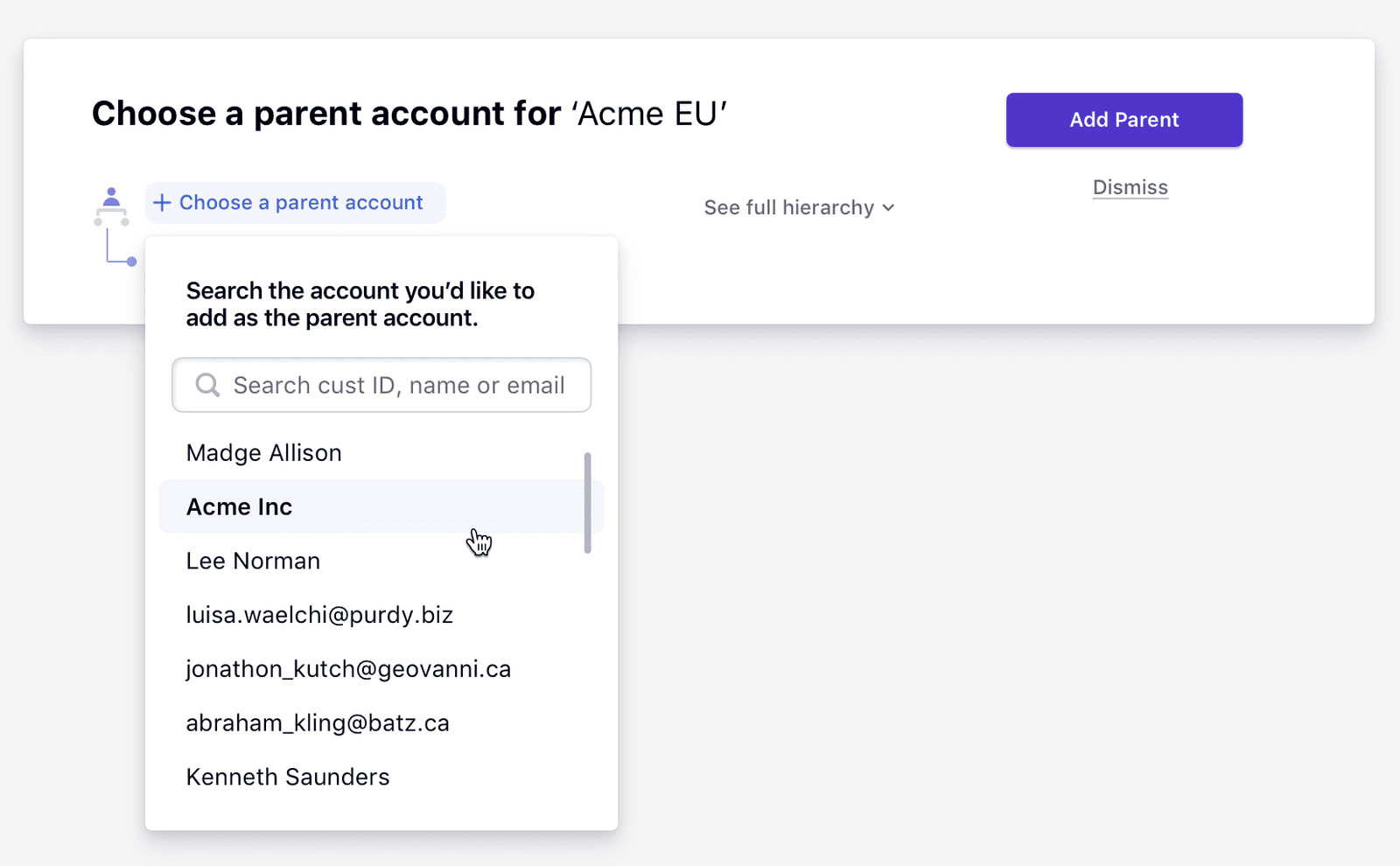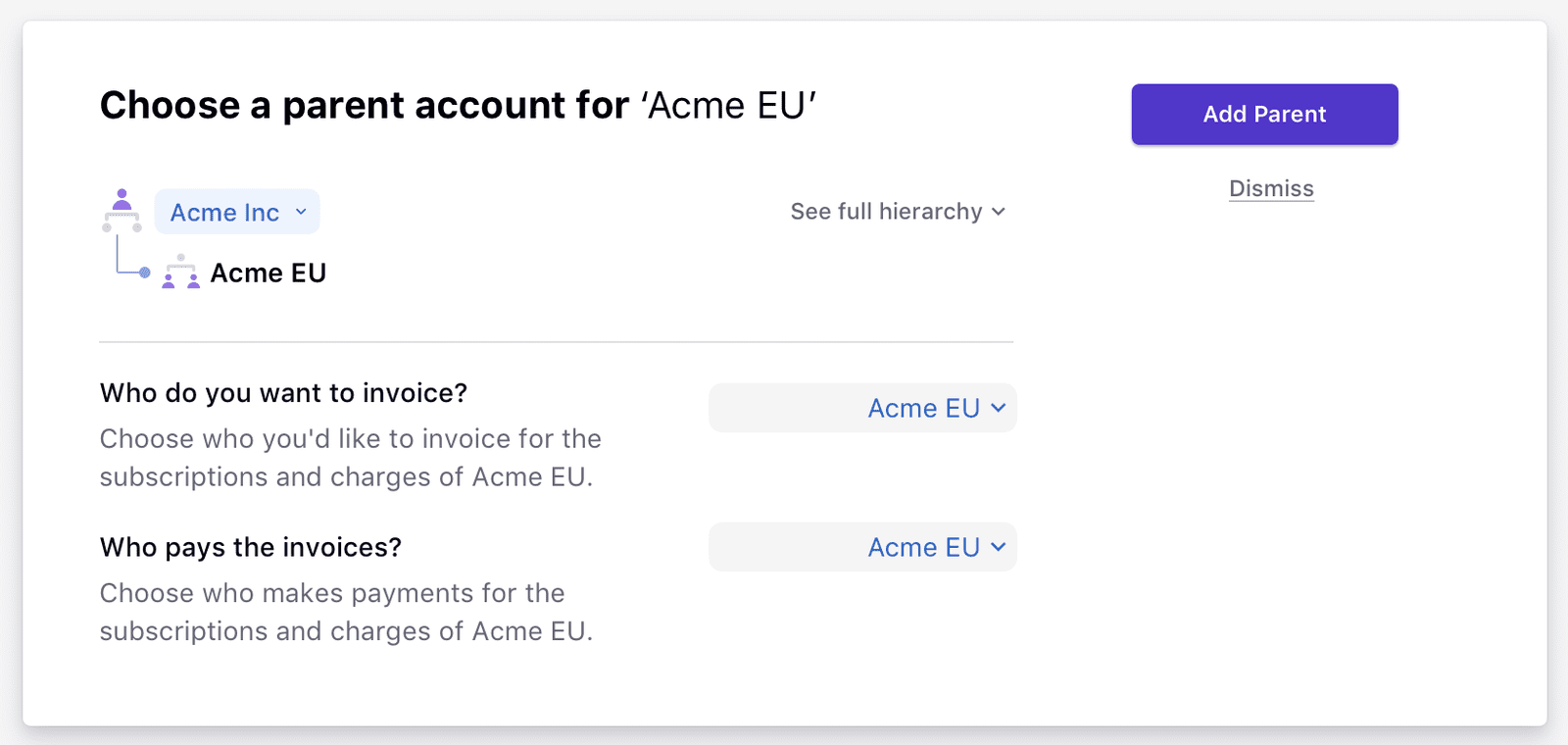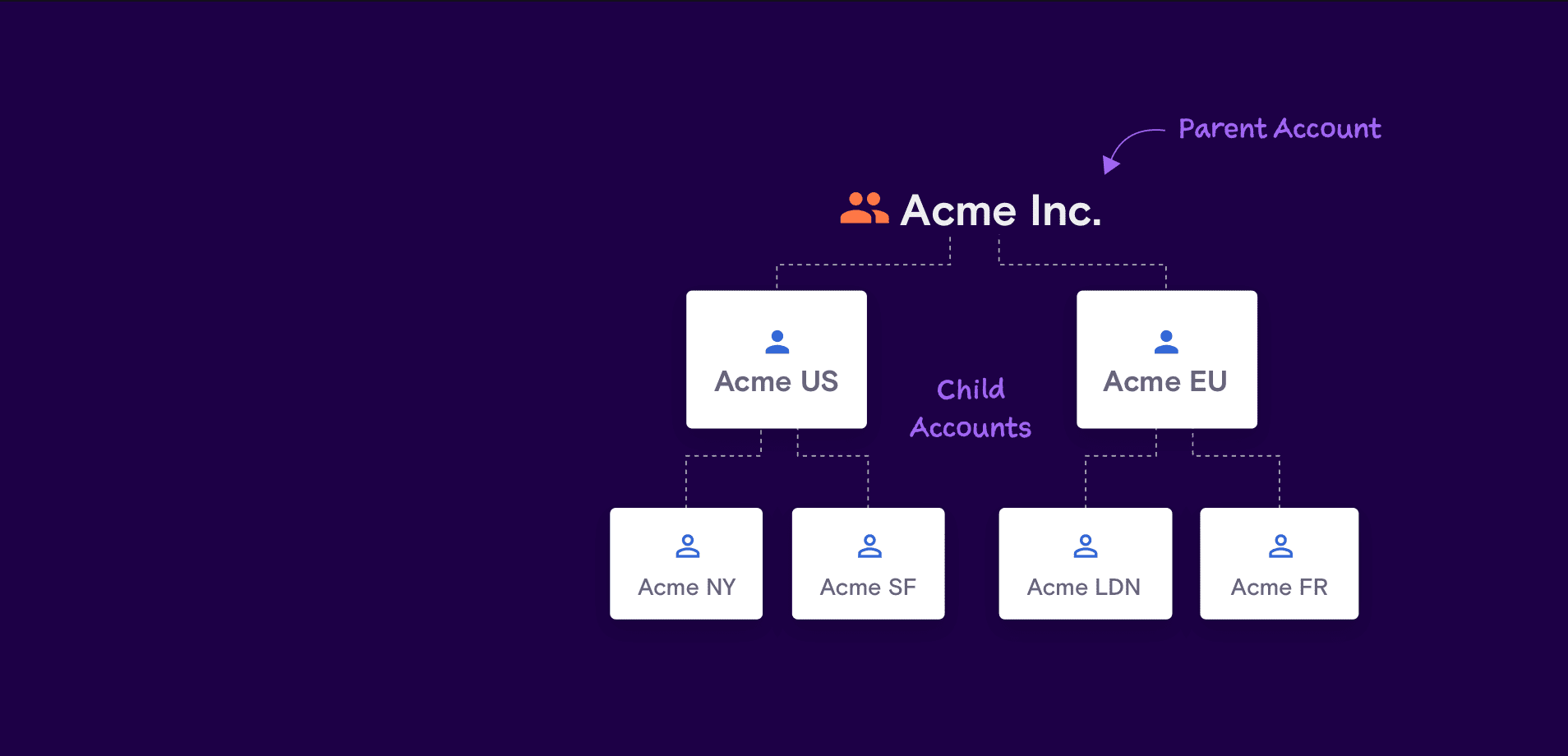You have a simple task: your customers want to pay you and you want to make it easy for them to do it.
If your customer has subscribed to one product, from a single billing address on a monthly basis – you implement a system that takes care of billing them on a recurring basis, and you forget about it. But, what if your customer has multiple subsidiaries and they’re all subscribed to your product? Does it change anything?
Let me answer that question by drawing out a couple of different scenarios that may pan out (or are already panning out) in your potential customer’s company.
Alice, the head of marketing at UnReal Inc., decides to give spreadsheets a break and takes your project management software for a spin. It does a good job of keeping everybody in the team aligned and more productive. She takes it on herself to become the brand advocate for your SaaS within her org. Three months down, 5 teams in the San Francisco office and 4 teams in the Atlanta office have subscribed to your product.
But, does it make sense for you to bill 9 department heads across 2 offices individually when all of the software purchases end up passing through the common procurement department anyway?
That’s a valid question to ponder on. But, that can wait.
You’re clearly growing. You’ve made a sticky product and it shows. What started off as a one-product-one-market crusade catapulted into a multi-product SaaS company. And you now have a suite of products that cater to every stage of the customer lifecycle right from martech to churn detection. Naturally, you have customers coming from multiple departments. And although each department owns the corresponding evaluation and implementation phases, the finance team picks up the tab for all of them.
In order to streamline their processes, this customer’s finance team gets back to you with a request – to consolidate all of the payments that are addressed to each department in one concise invoice.
But before you can reflect on that request, there’s trouble looming right inside your company. Charlie, from finance, accounts for all of the payments from companies with multiple subsidiaries separately – as if they hold no connection to each other.
Which is why, you will never know that the biggest account you hold is, in fact, the biggest account.
For example, think of a company like Microsoft with its endless acquisitions. Imagine some of its child companies like LinkedIn, Skype and GitHub also happen to be your customers. How do you get a bird’s eye view of how much this cluster of companies contributes to your MRR?
What Charlie would’ve liked is to be able to view, report on, and reconcile all of these accounts as if they were a single account. And have a unified view of all outstanding dues and aging reports at the parent level. Simply because, she’d otherwise have to end up collating transaction from disparate dates, scouring for invoices from each transaction – all of which are recipes for the chart of accounts disaster.
And what do you know, this might even be the perfect opportunity for Sales to pitch upgrades and annual contracts to the accounts that have invested a lot of interest in your product.
It does seem like three unrelated situations. But on the billing front, there’s a common thread that runs beneath all these use cases: Not every customer who wants to sign up and purchase a subscription is responsible for paying for it. And sometimes, one customer could be responsible for paying for multiple subscriptions covering various teams and locations.
Subscription billing is an ever-evolving landscape, and payment and subscription ownership are no different – it does not always have to be a simple one-to-many mapping.
Chargebee’s Account Hierarchy lets you model complex (and unique) hierarchical structures as simple parent-child relationships and enables you to define payment responsibilities within the hierarchy. You can, therefore, sell to multiple subsidiaries of a company, business units across geographies, or even multiple departments in an organization, without losing sight of the big picture.
Pro tip: Throw in Chargebee’s Consolidated Invoicing and Calendar Billing, and you’ll never have to say no to a customer’s request to club multiple charges to the same ‘parent’ card and roll out a single invoice on the 23rd of every month.
How Account Hierarchy works within Chargebee
Once you’ve enabled Account Hierarchy within Chargebee, you can map any number of parent-child relationships. Within the mapped hierarchy you can decide whether the child, the immediate parent or any other parent in the tree pays for and receives the invoices.


If you don’t have a need to set payment responsibilities, you can still group customers and get a holistic view of the account with metrics such as: MRR, Net MRR Growth, Total Billing, Receivables, Total Outstanding Dues, Active Accounts, Upgraded Accounts, Downgraded Accounts, New Accounts. And drill down to diagnose when your defined KPI falls below the benchmark.
Customer Portal and Email Notifications
Sure, a parent pays for a particular subscription, but that doesn’t mean that the child needs to be locked out from accessing her own subscription. Take, for example, an e-learning app that allows universities to pay for its students and lets students manage their own subscriptions in their customer portals.
Chargebee lets both the parent and child accounts view the account relationship and subscription details in the Customer Self-serve portal. You can also set up an email cadence within Chargebee to notify billing owners of payment and invoice related activities and children of critical updates to their subscriptions.
If you’re thinking you don’t have these use cases in your company today, hold your horses. Let’s say you’re pivoting towards enterprise sales. You may have to support situations where a certain ‘BigFish’ Corporation pays for its subordinate company’s bills. That’s why you need to embrace strategic thinking and decide if the solution that you’ve hired to simplify billing operations today can adapt to newer problems that will crop up tomorrow.
To enable account hierarchy within your Chargebee account, reach out to support@chargebee.com. If you’ve come across any interesting use cases and you’re wondering if Account Hierarchy will solve it, share them with me at sumyukthaa@chargebee.com.

